Managing Custom Roles
Users who have both the manage-custom-roles and view-custom-roles effective roles assigned from the User Management client application (assigned to the eleveo.admin by default), are able to add and configure custom roles.
Custom roles are composite and can contain a combination of existing effective or composite roles, as well as other previously created custom roles. After being created, they are listed on the Roles Mappings tab and can be assigned to users.
This page describes the general process of creating a generic custom role from within User Management. To find details about creating the custom roles necessary for Eleveo, visit the page Using Eleveo Specific Roles.
Adding Custom Roles
To add a new role, click Manage Roles within the navigation tree on the left. The Manage Roles screen will display. Then click the Add Role button.
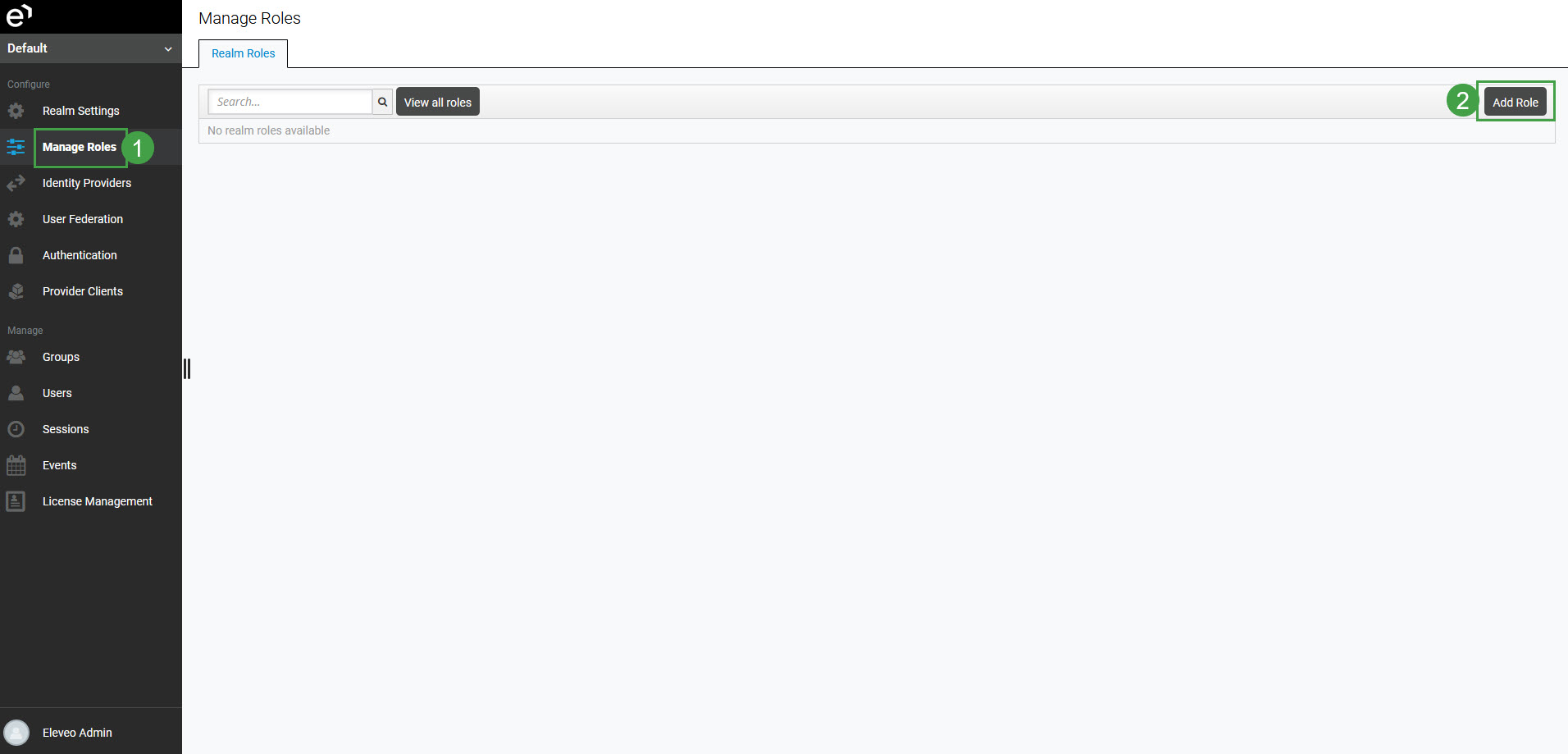
On the Add Role screen, fill in the Role Name value. Optionally, provide a description. Click Save to create a role (alternatively, click Cancel to abandon changes).
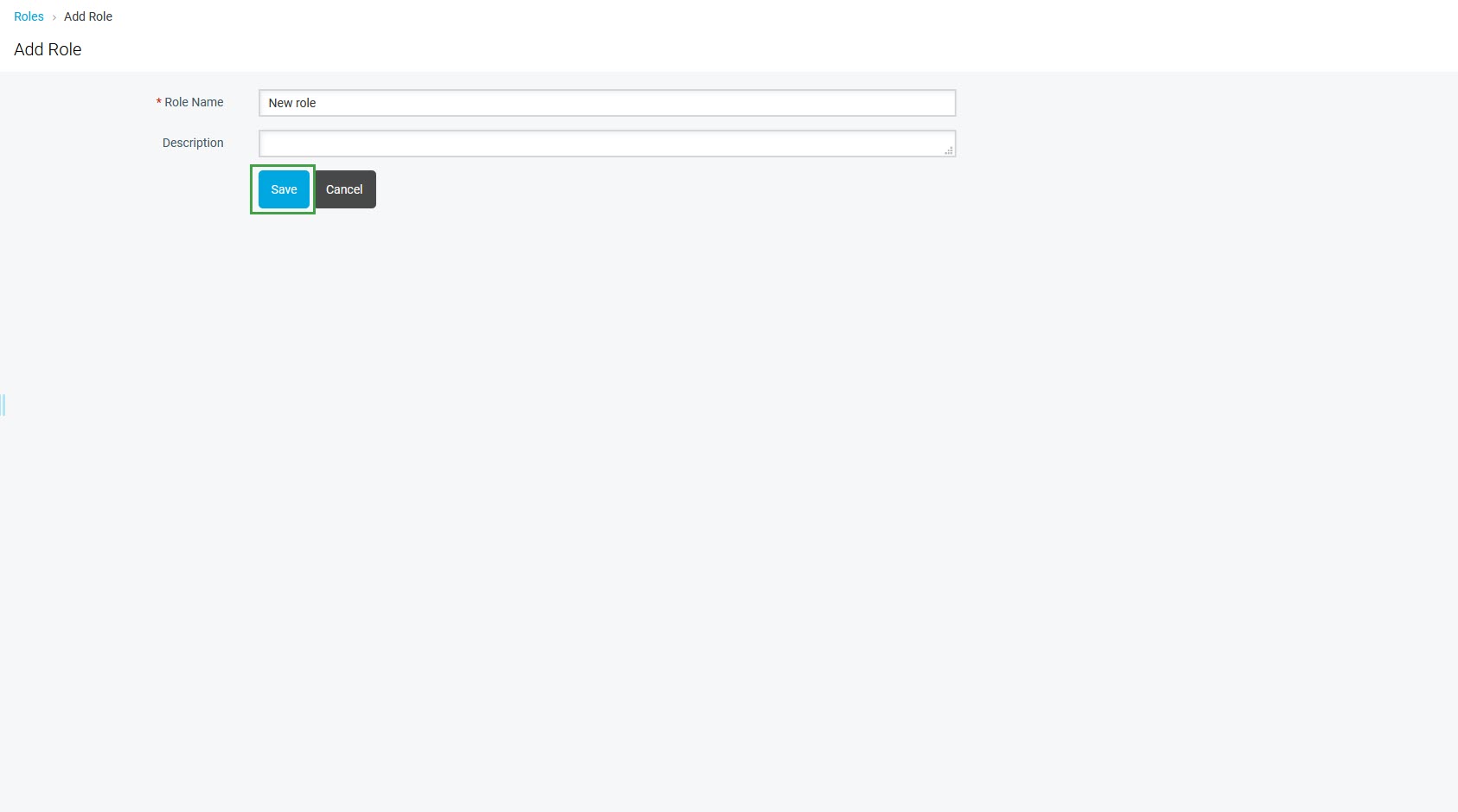
A configuration page for the new role will display. A new custom role is a composite role by default. This means that it is created as a set of permissions (effective roles). Start typing the name of the application and select it to see all available effective roles.
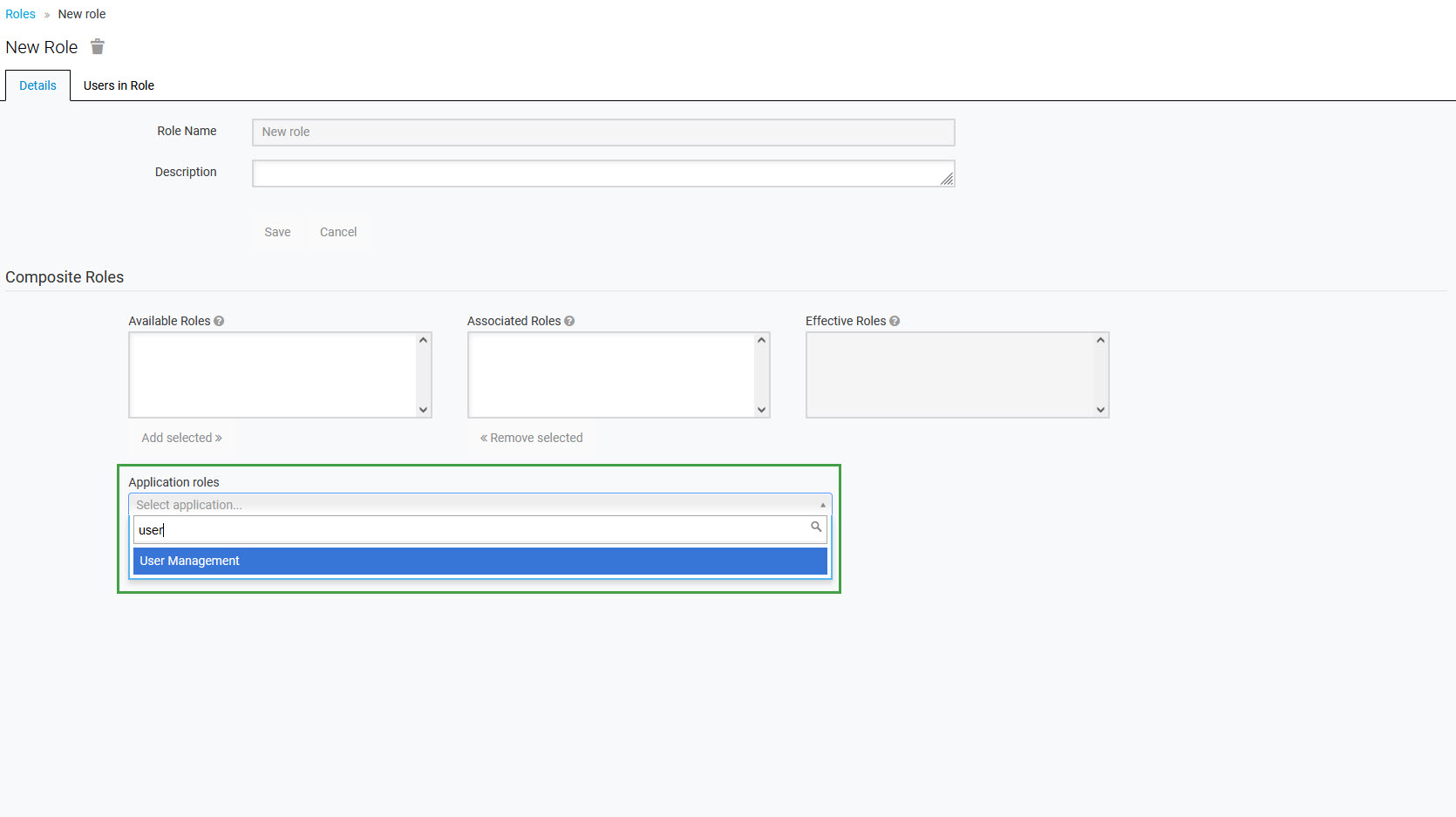
A list of the effective roles is visible in the Available Roles field. Click on the role to select it and then click Add selected.

Hold down the Ctrl key to select multiple roles.
All selected roles are then listed in the Associated Roles field. As some roles may already contain other effective roles, the list of all roles that will apply is listed in the Effective Roles field.
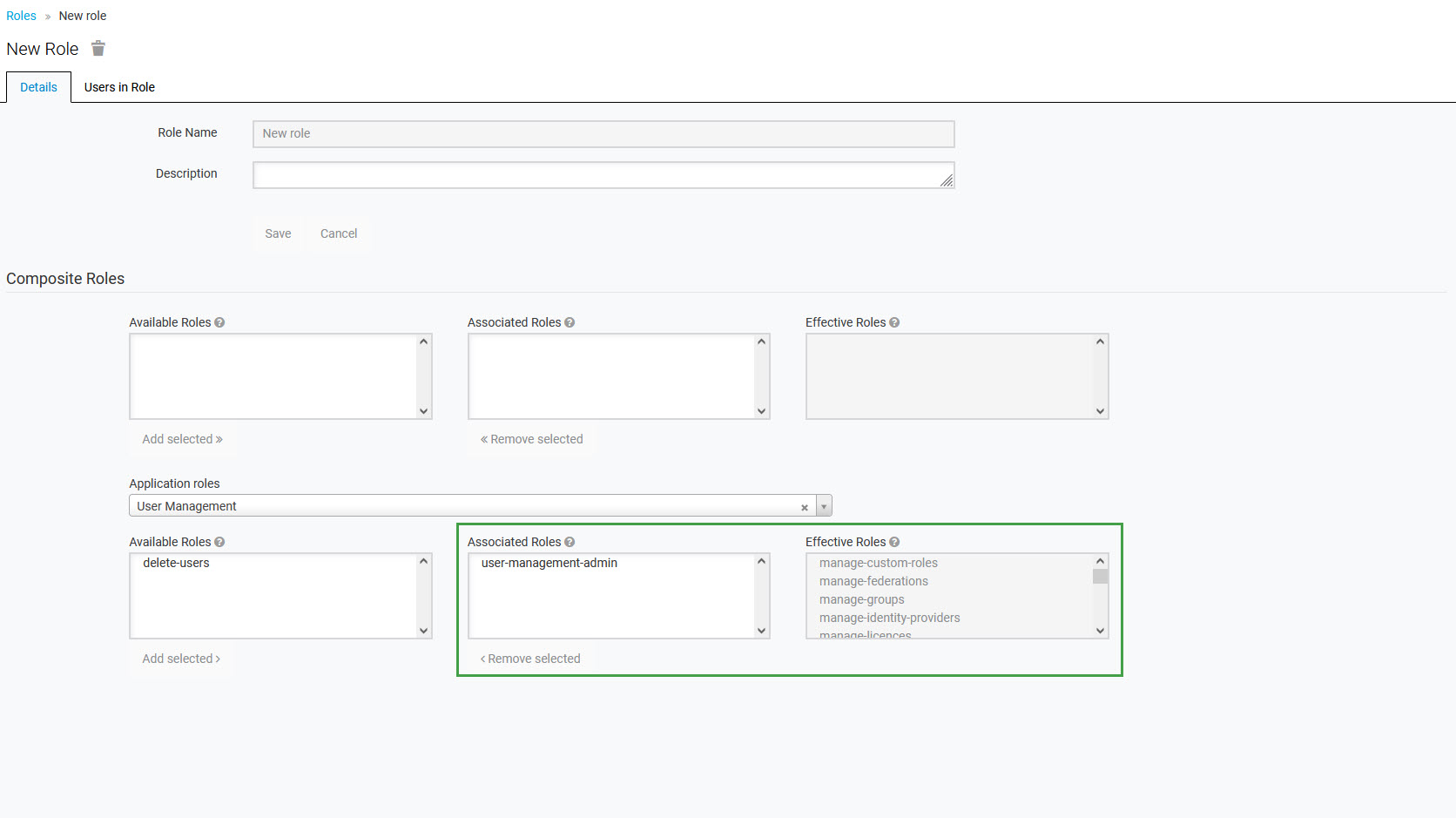
To remove a role, click on it and then click Remove selected.
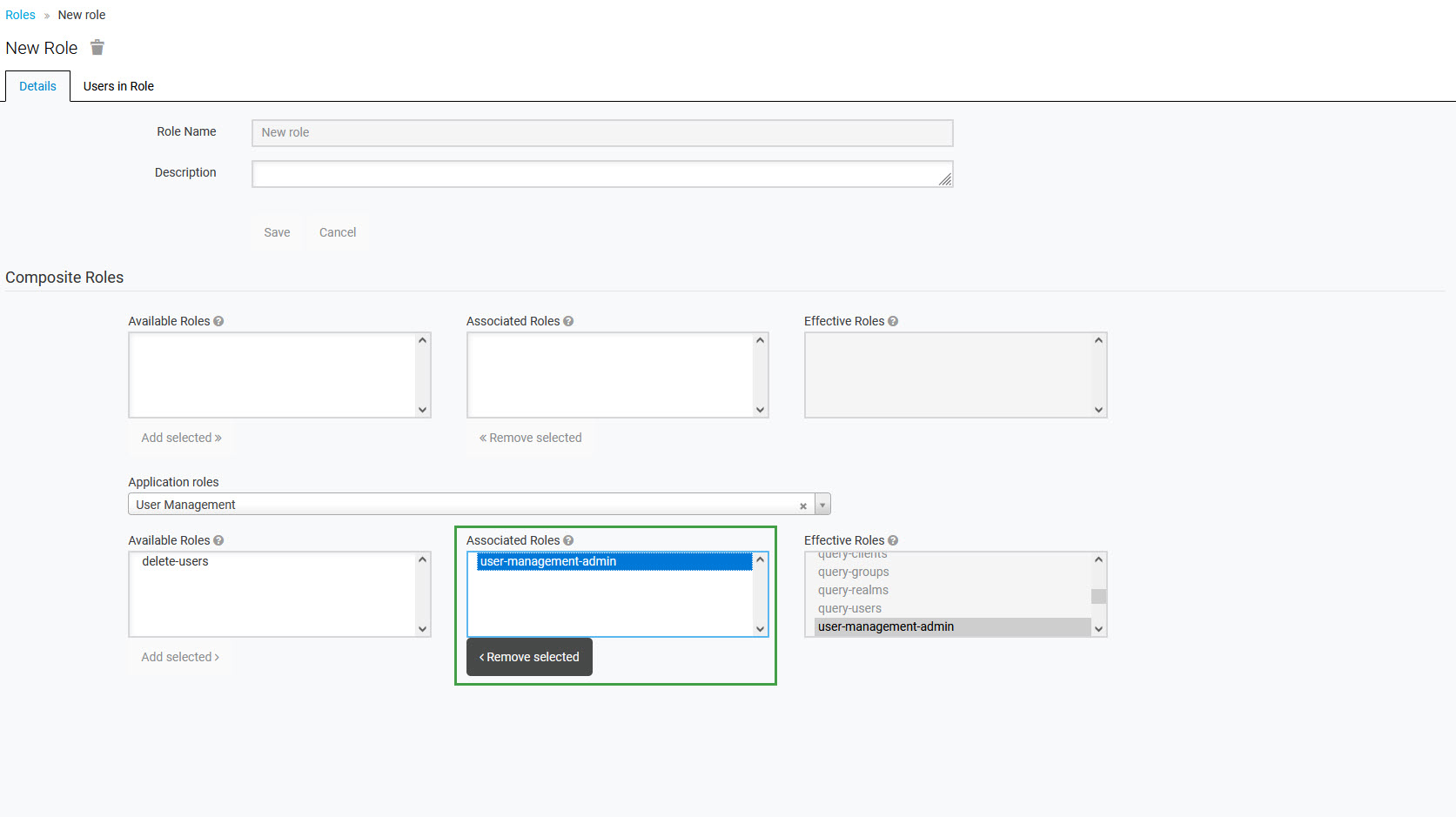
It is also possible to add existing custom roles to a new custom role. In this way, the parent-child role structure will be created. Click on the role to select it and then click Add selected.
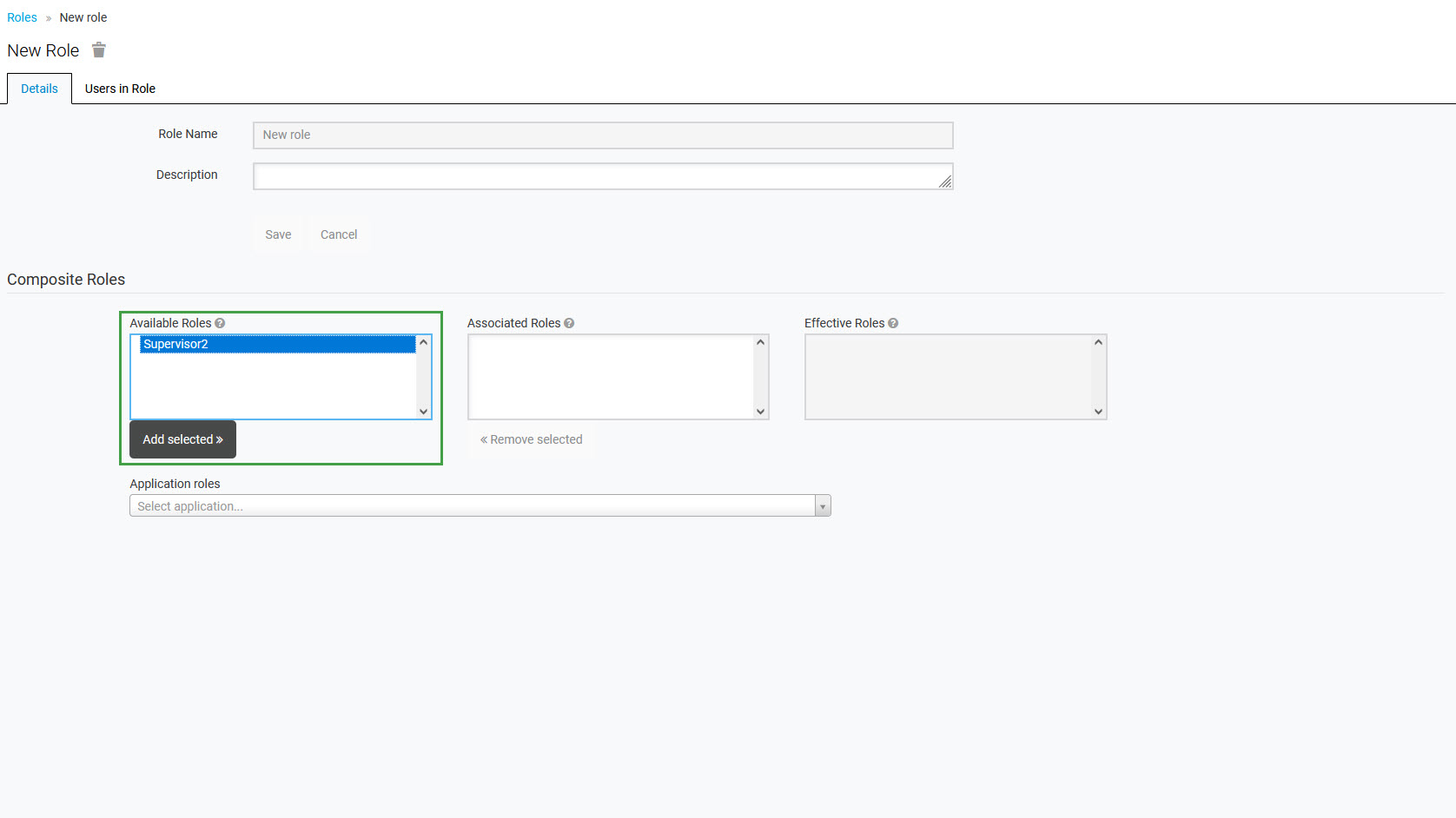
All selected roles are then listed in the Associated Roles field. Because some of them may be already a set of other custom roles, the list of all custom roles that will apply is listed in the Effective Roles field.
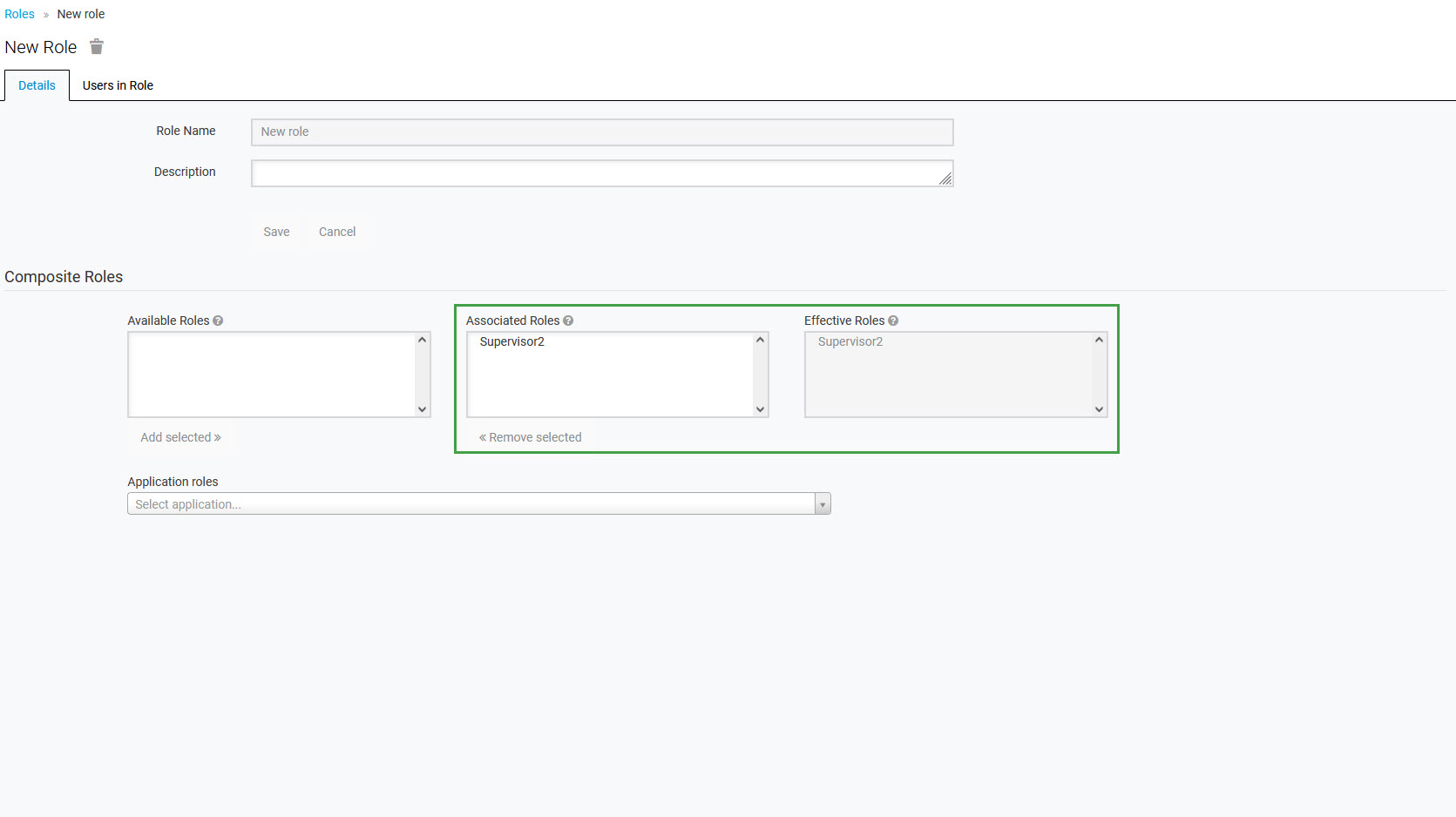
To remove a role, click on it and then click Remove selected.
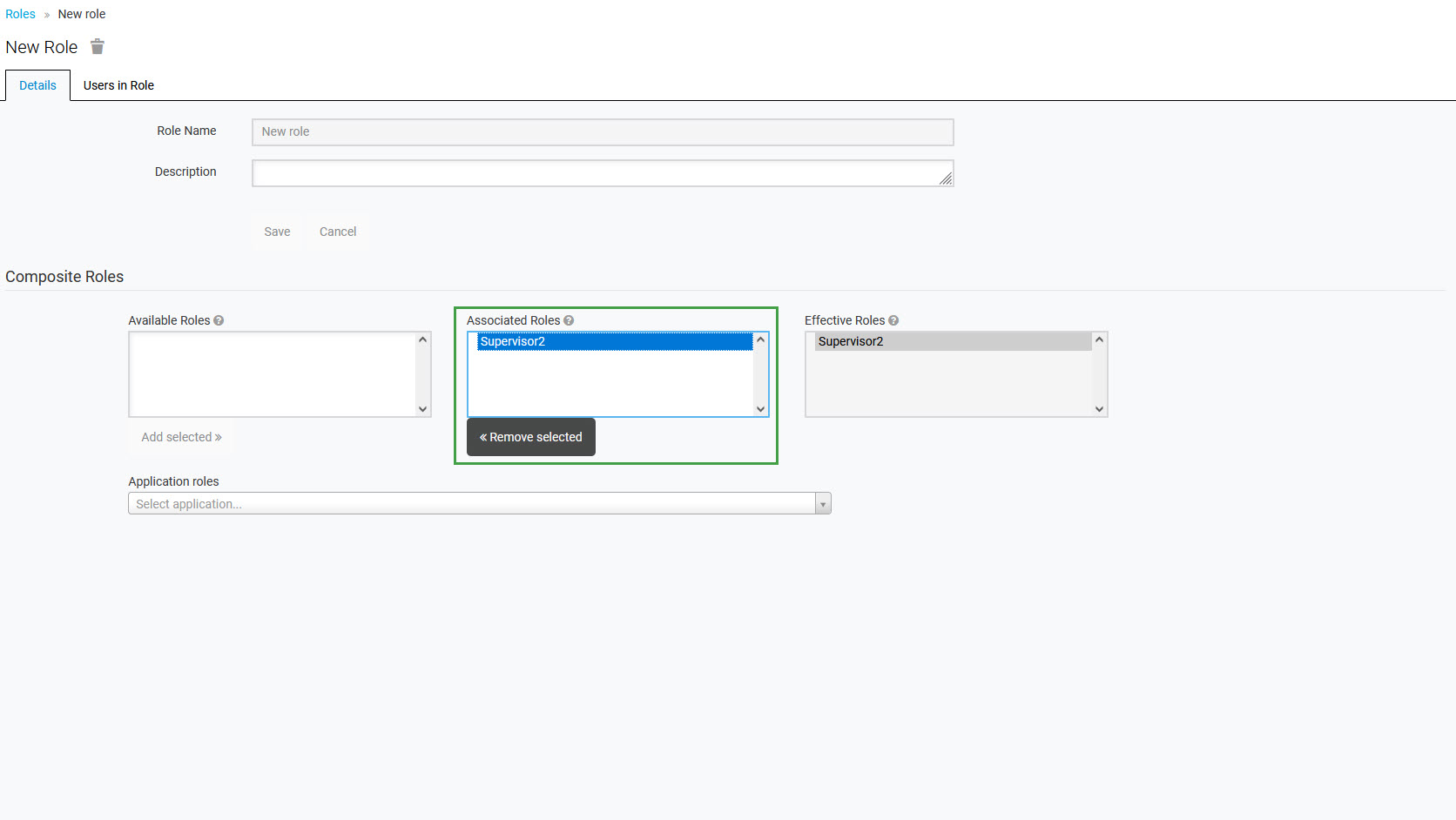
Users Assigned to a Role
All users who have the role assigned are listed on the Users in Role tab. Users can have a role assigned in the following ways:
a user was directly assigned a role
a user was assigned a parent role, so a child role is also assigned to him
a user is a member of a group that has a role assigned
a user is a member of a child group, so also all roles assigned to the parent group are assigned to the user.
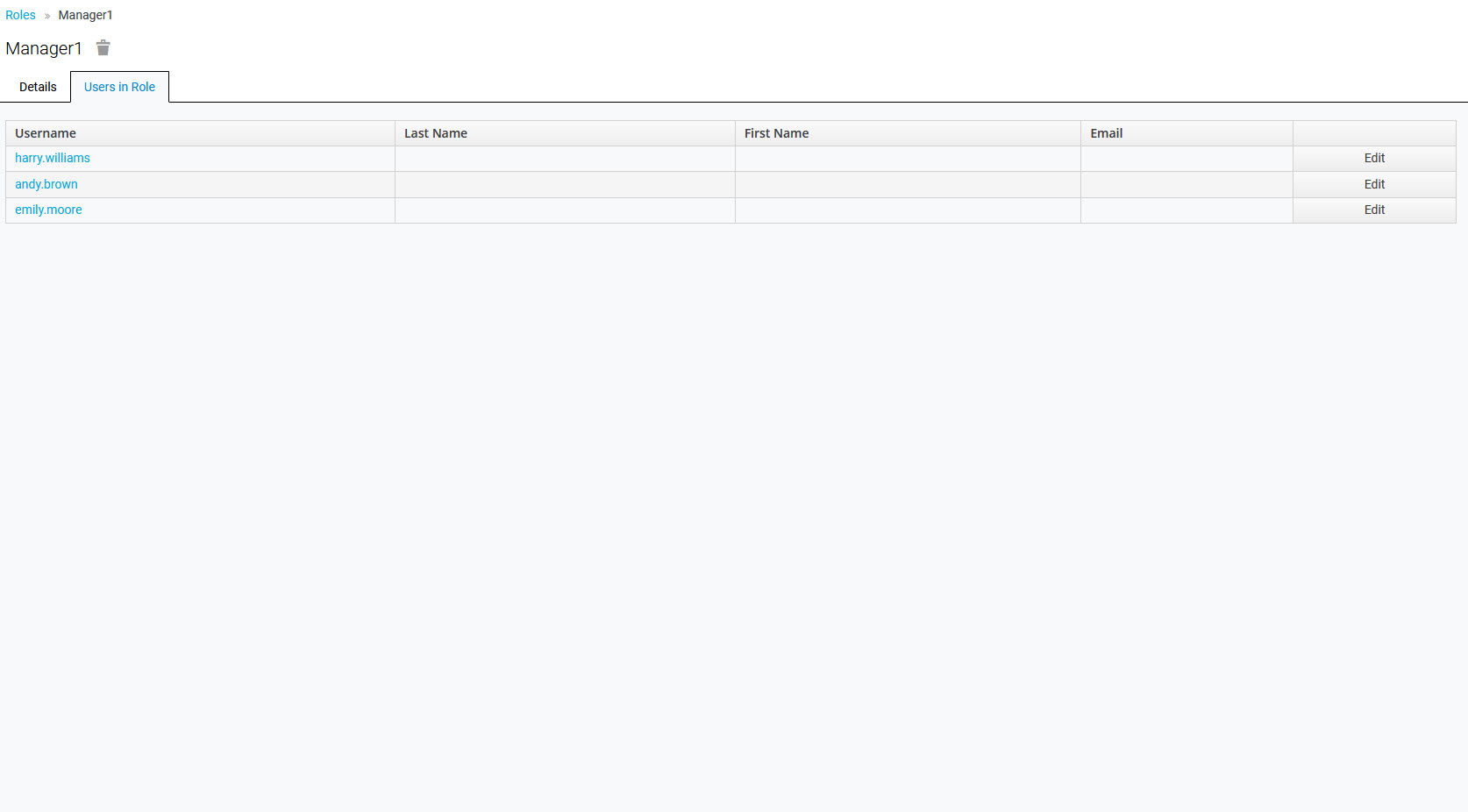
Click Edit to switch to the user's configuration page.
More information about assigning roles to users can be found on the Assigning Roles page.
Editing Custom Roles
To edit a role, click the Edit button to the right of the role's name on the Manage Roles screen.
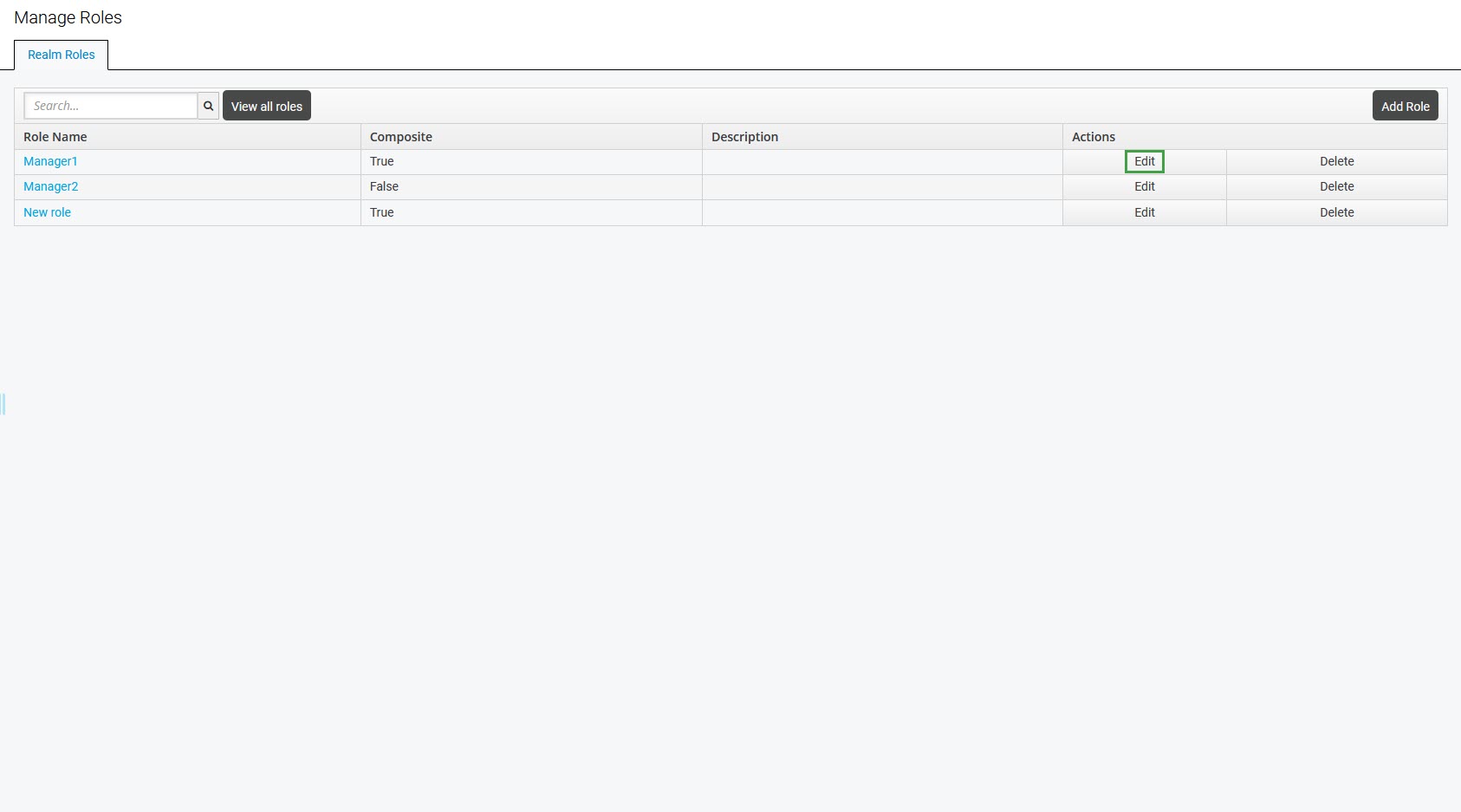
A configuration page for the role will display. It is possible to edit the assignment of roles in the Composite Roles section. It is not possible to change the name of the role.
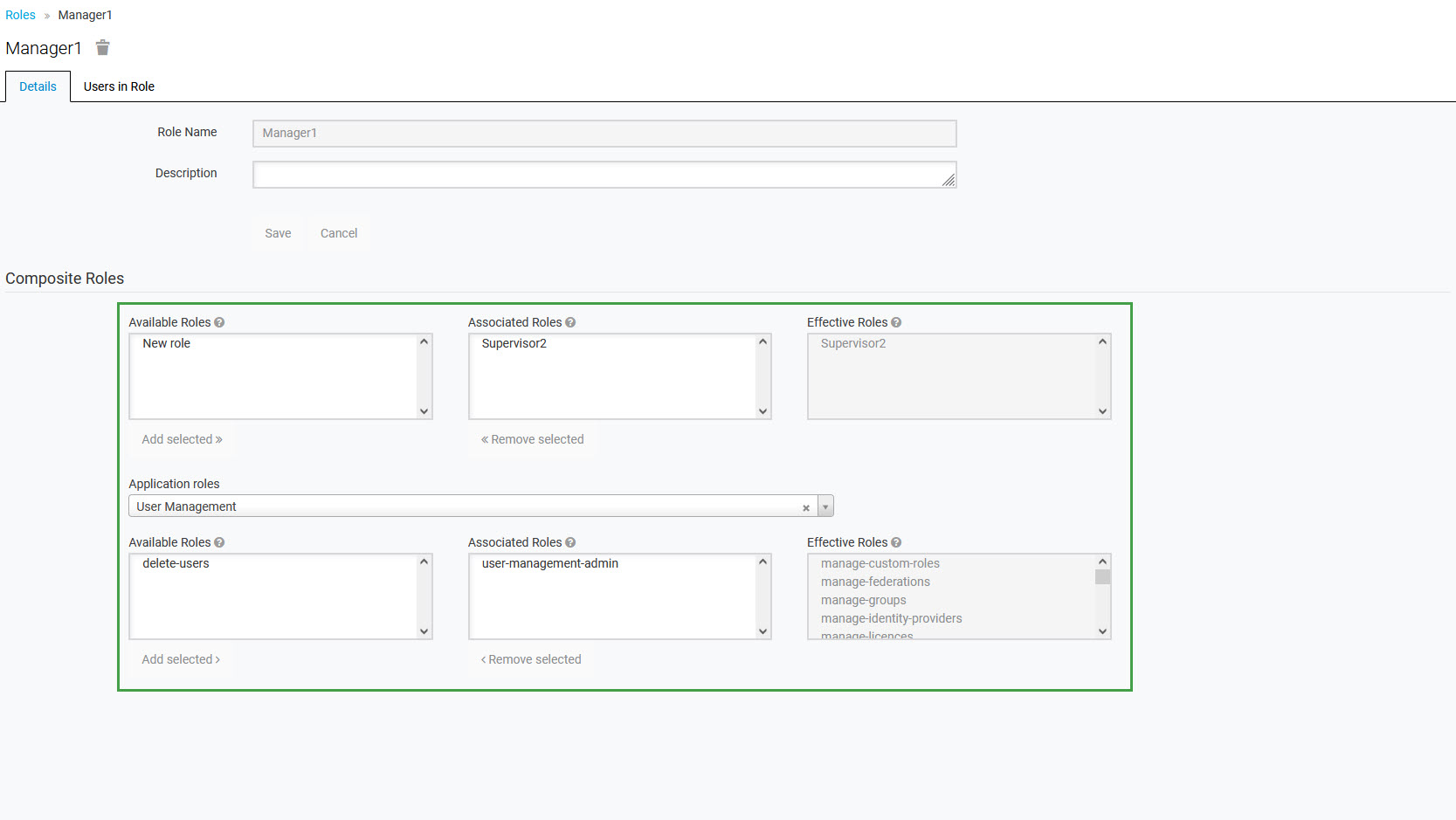
Deleting Custom Roles
To delete the role, click the Delete button to the right of the role's name on the Manage Roles screen.

Click Delete to confirm.

